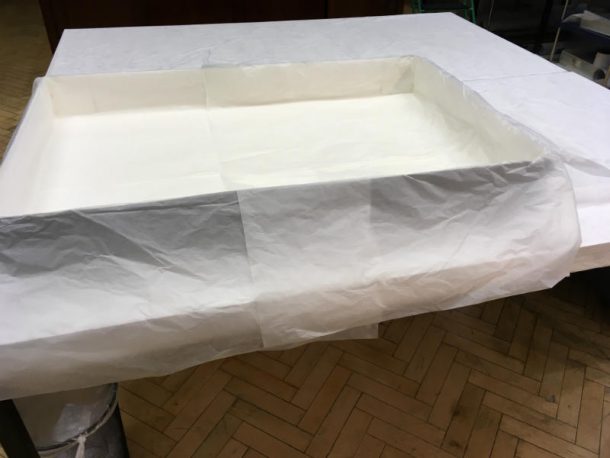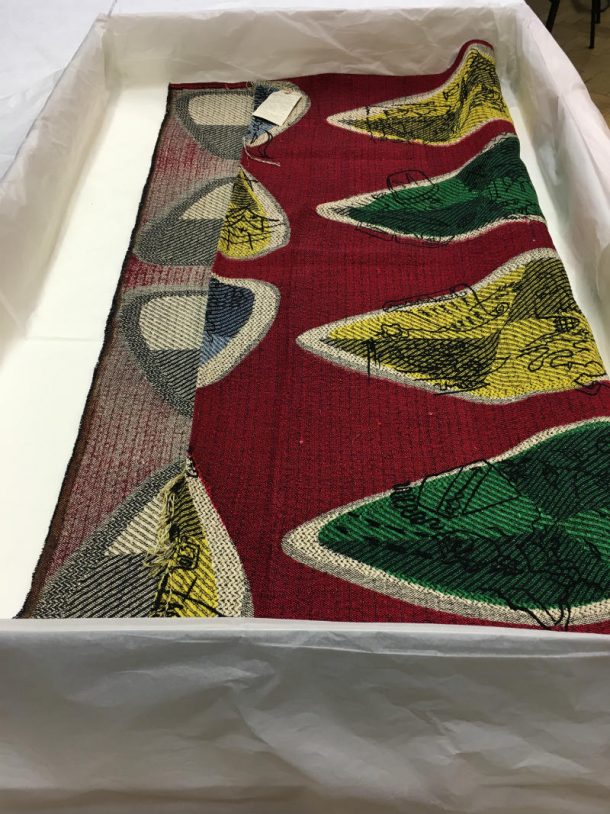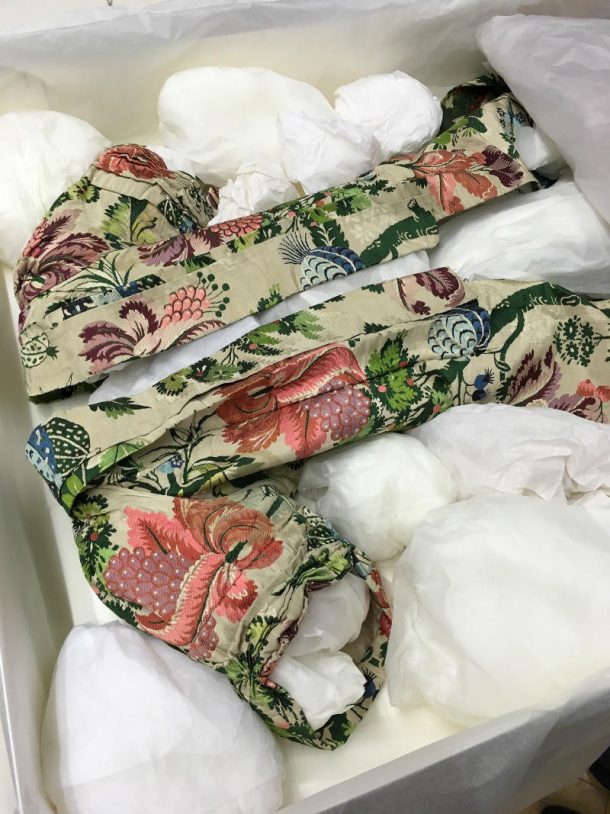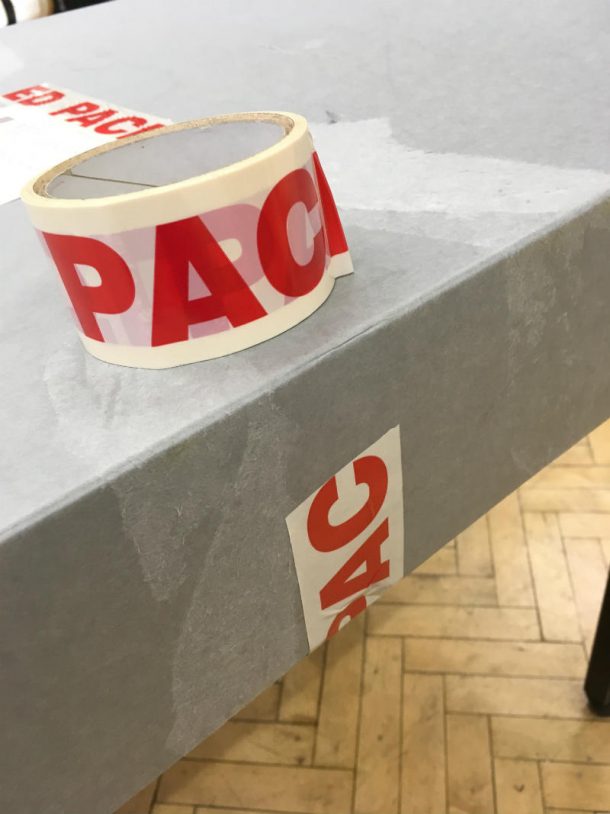There’s no brightly-coloured wrapping paper involved, and these parcels definitely shouldn’t be left under a tree or beside an open fire, but I can’t help but think of Christmas presents as I box up Museum objects in transit to our South Kensington site this winter. And I don’t think it’s just because I’m starting to feel Christmassy. Like Christmas presents, the objects within these packages have been carefully selected—they might be heading out for conservation at the Museum, or perhaps they’re going to be displayed—and they are wrapped with real care.
First, the right container needs to be chosen. Typically we use acid-free cardboard boxes, and usually old ones can be reused. They may not be glamorous, but they’re simultaneously sturdy and lightweight, with full-closure lids, and it’s great that the Museum is able to recycle in this way. Boxes of various sizes are available. Those with “ECCLES” written on their sides are large and in hot demand; we’re often packing big objects. The “ECCLES” is short for ecclesiastical. When the textiles and fashion collection moved to Blythe House large ecclesiastical garments were transported first, in specially made boxes.
The chosen box is lined with acid-free tissue, which, like our cardboard boxes, is Ph neutral and therefore capable of preventing tarnishing. This tissue lining should extend beyond the box’s edges, so that it can be wrapped over the top of the packed item, or items, before the box is closed, to provide further protection and hold everything together.

If more than one object needs to be packed, it’s important to think about which one should be put in first. Generally the sturdiest and largest item goes at the bottom of the box, with more fragile, smaller pieces being placed on top. Objects are always separated from one another by tissue. It would be bad news if, say, sequins on one of our glittering Mainbocher jackets were to catch on one of the collection’s many delicate net dresses. This Christmas present seems to be turning into a brimming stocking—but for obvious reasons V&A packages can’t be stuffed with objects and allowed to overflow. We often send out more than one box at a time in order to avoid this.
Decisions also need to be made about how to pack each individual item. Small, flat textiles can usually go in flat, but large pieces of fabric need to be rolled, or folded over sausages. Don’t worry, these sausages are made out of tissue paper. These practices guard against the formation of creases. Things tend to get a bit more complicated when dress items need to be packed. Tissue sausages and wads (sometimes referred to elsewhere as puffs or, rather charmingly, jellyfish) come in handy when it comes to avoiding creases and preserving shape. For example, sausages are sometimes inserted down a garment’s sleeves, although not if the lining is so fragile that this would be likely to do more harm than good. Tissue is also used to fill empty spaces in packed boxes. Such spaces allow packed items to move around. Mannequins—which are secured within bespoke wooden crates for transport—are another good means of protecting garments in transit.


Next, the pieces of tissue used to line the box are wrapped over the objects, and the lid is put back on. The lid needs to be secured by tape, which announces that the box is “PACKED” in large red capital letters. Christmas presents are usually meant to be surprises, but it’s important to provide information about what’s inside these boxes. Typically we attach a piece of paper which gives key information about a box’s contents.

After the current locations of the packed objects have been updated on our database, a request is sent to the Museum Technicians. They use the goods lift to take our packed boxes from Blythe House’s third floor, where a large proportion of the Clothworkers’ Centre is located, to its yard. Then the parcels are taken away in our version of Santa’s sleigh—a box van with a tail lift.
I became the Collections Management Assistant at the Clothworkers’ Centre quite recently. I wonder if my family and friends will notice that my wrapping skills have improved this Christmas …
Packages are always coming as well as going, and we have thousands of items which can be viewed during Clothworkers’ Centre appointments. If you’re interested in making a booking, please email clothworkers@vam.ac.uk.
This post was edited by the author on 21 December 2020 as part of work on sensitive terminology and topics.



Such a great place where you can get free app nana hack online without spending a single penny.
Best of luck